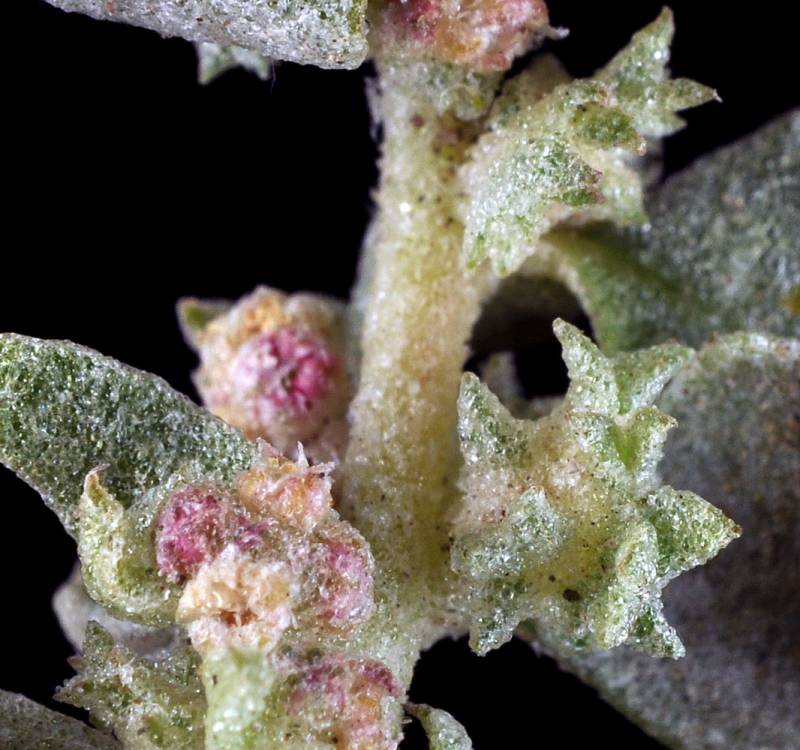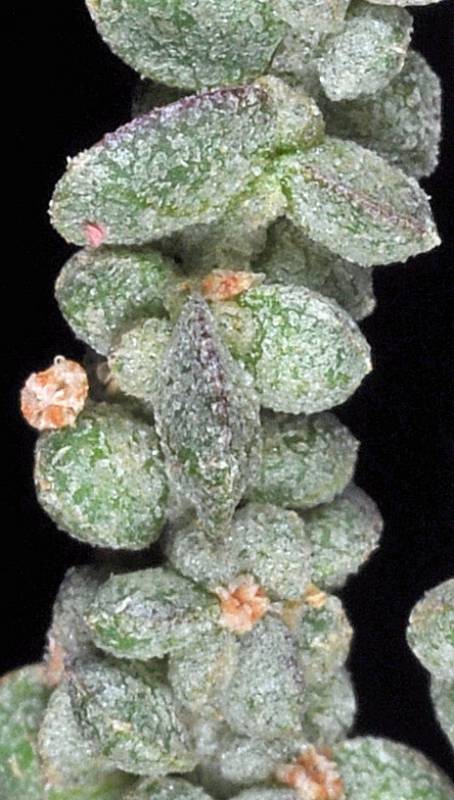Atriplex argentea
Atriplex heterosperma
silver orache, silverscale orache
orach, Russian atriplex orach
Leaves alternate except the lower cauline;
petioles 2-3 cm. long; leaf blades triangular to lance-triangular, green on both sides, 30-120 mm. long and 12-90 mm. wide, usually hastate, the margins entire or irregularly dentate.
Flowers in terminal or axillary panicles 6-25 cm. tall; staminate flowers with 5 sepals, 5 petals and 5 stamens; pistillate flowers dimorphic, lacking a perianth, the pistil naked, enclosed with a pair of leafy bracteoles;
stigmas 2.
Fruiting bracteoles ovate, of 2 sizes; larger ones 5-6 x 5 mm., smaller ones 2 x 2 mm. Seeds of larger bracteoles yellowish brown, of smaller bracteoles, black.
Atriplex argentea
Atriplex heterosperma
- Local floras:
BC,
CA,
OR,
WA
- Local Web sites:
CalFlora,
CalPhotos,
Flora NW,
PNW Herbaria
WildflowerSearch
iNaturalist (observations)
USDA Plants Database
- LBJ Wildflower Center
- SEINet
- Plants of the World Online
- Encyclopedia of Life
- Wikipedia
- Google Image Search
- Local floras:
BC,
CA,
OR,
WA
- Local Web sites:
CalFlora,
CalPhotos,
Flora NW,
PNW Herbaria
WildflowerSearch
iNaturalist (observations)
USDA Plants Database
- LBJ Wildflower Center
- SEINet
- Plants of the World Online
- Encyclopedia of Life
- Wikipedia
- Google Image Search



